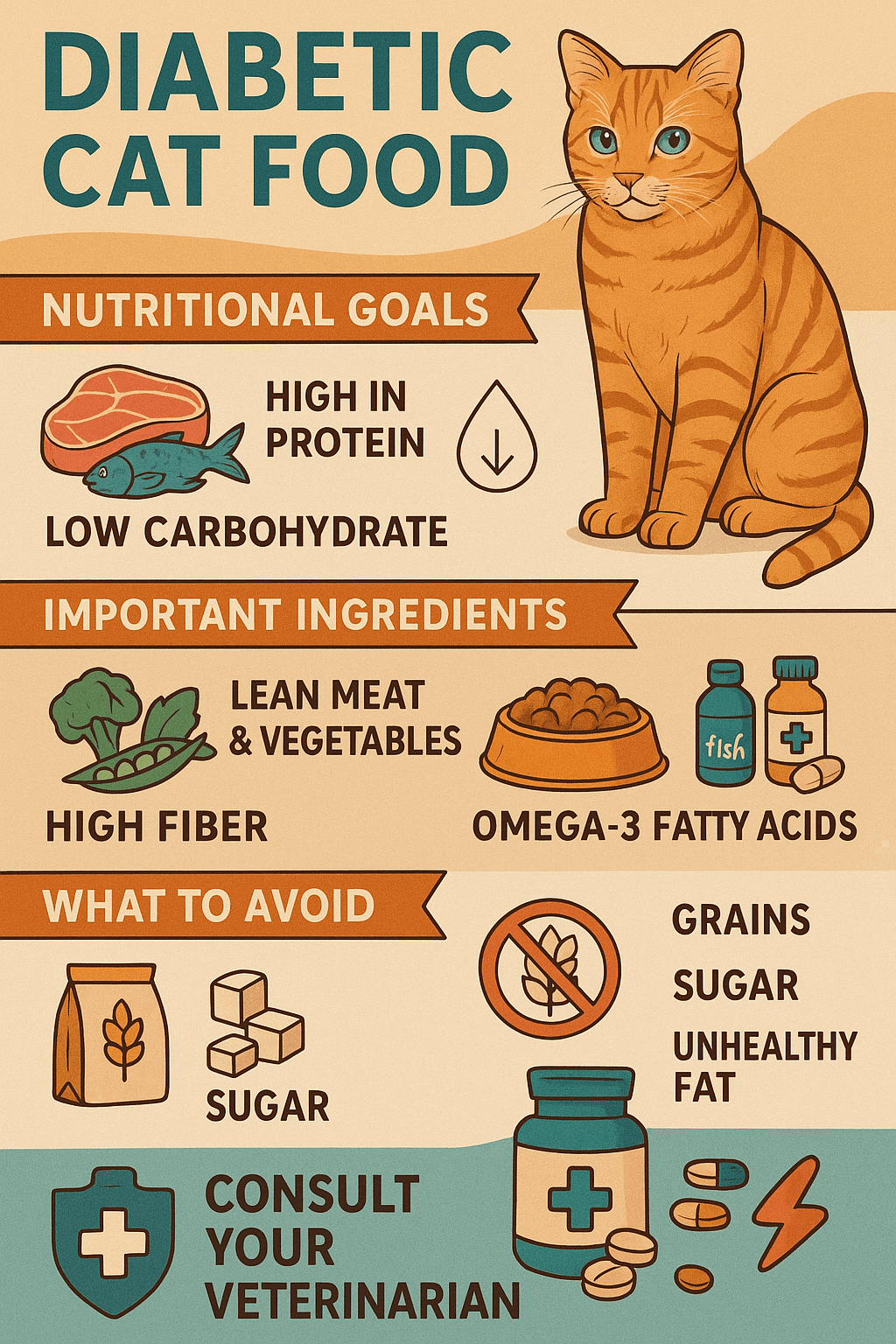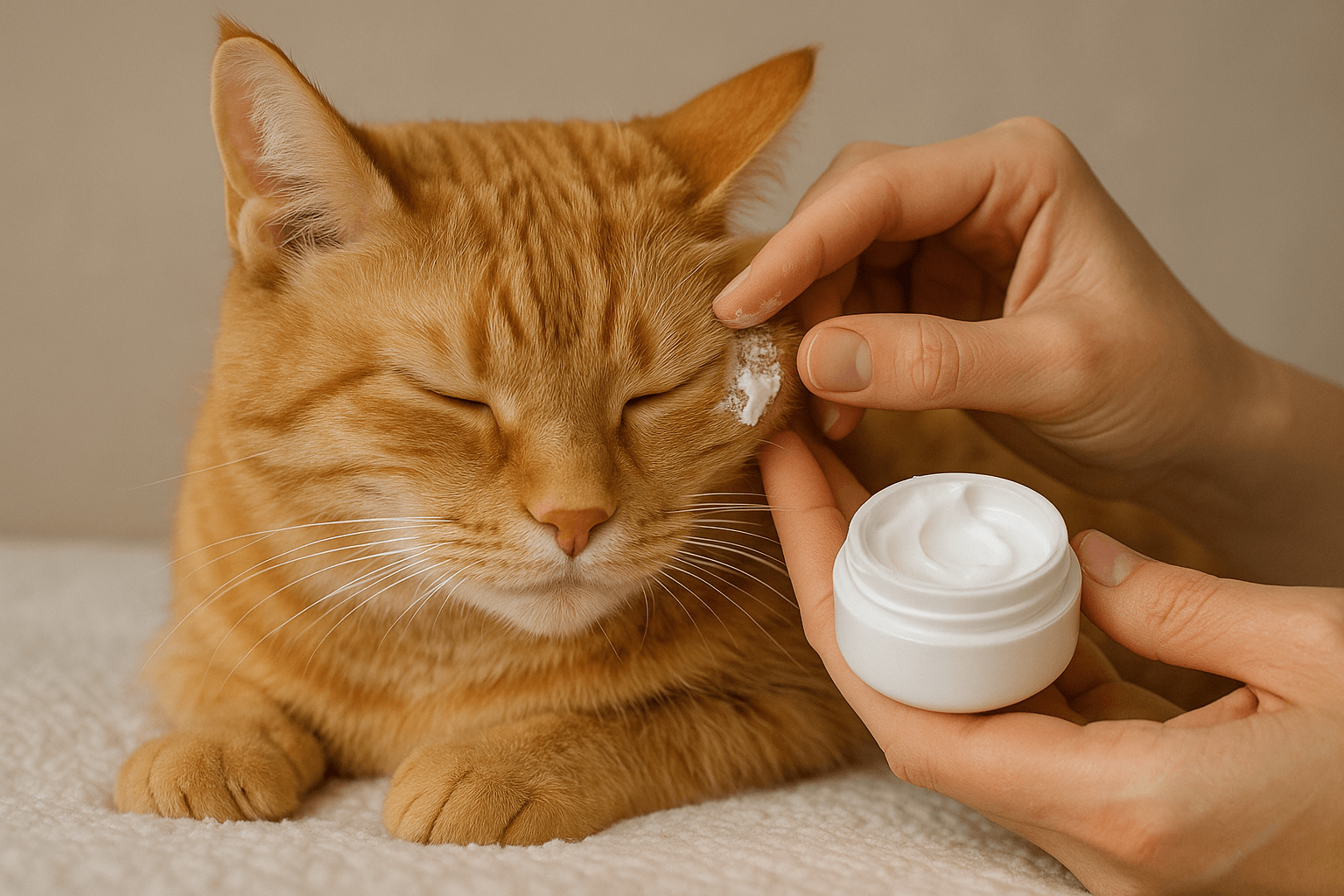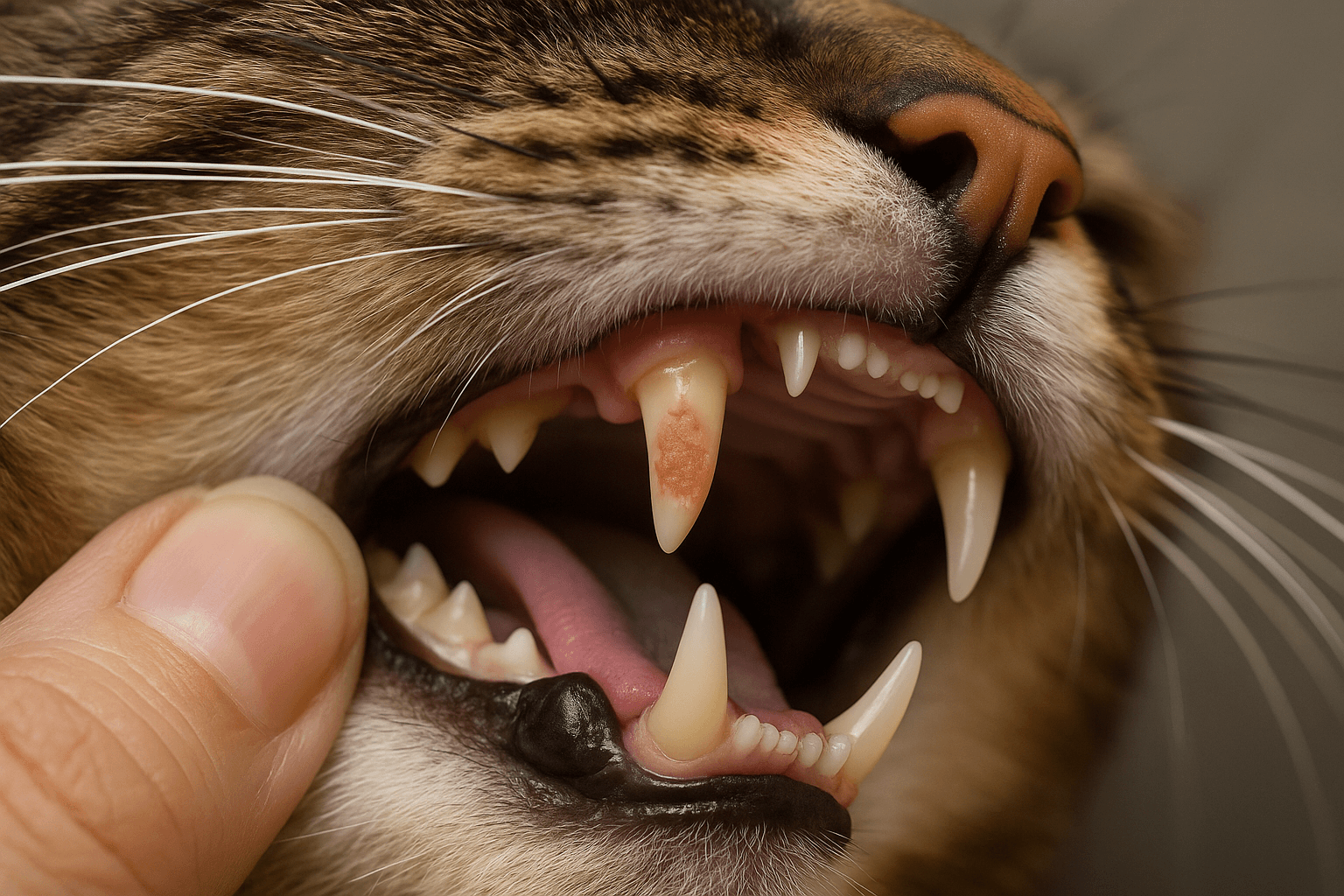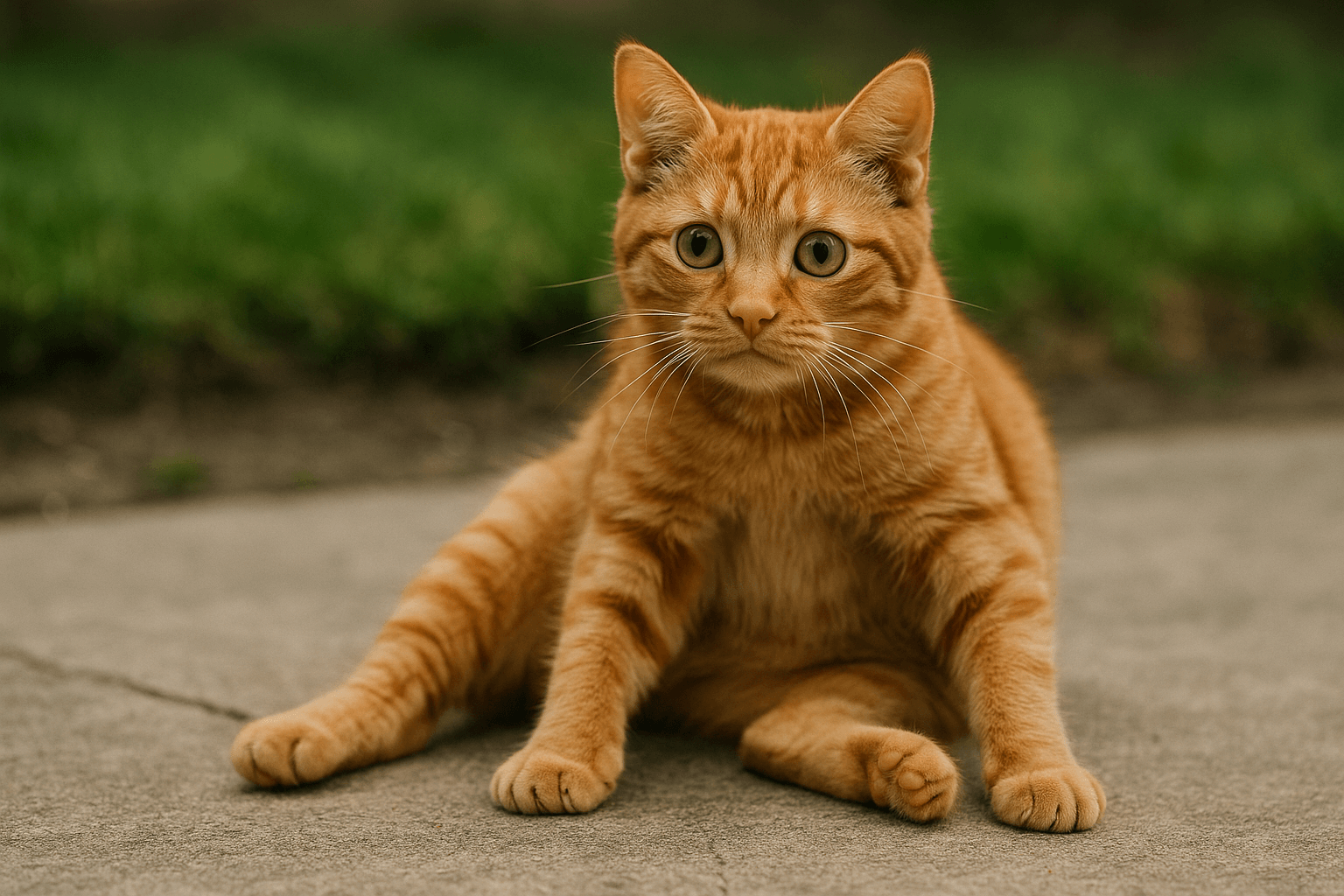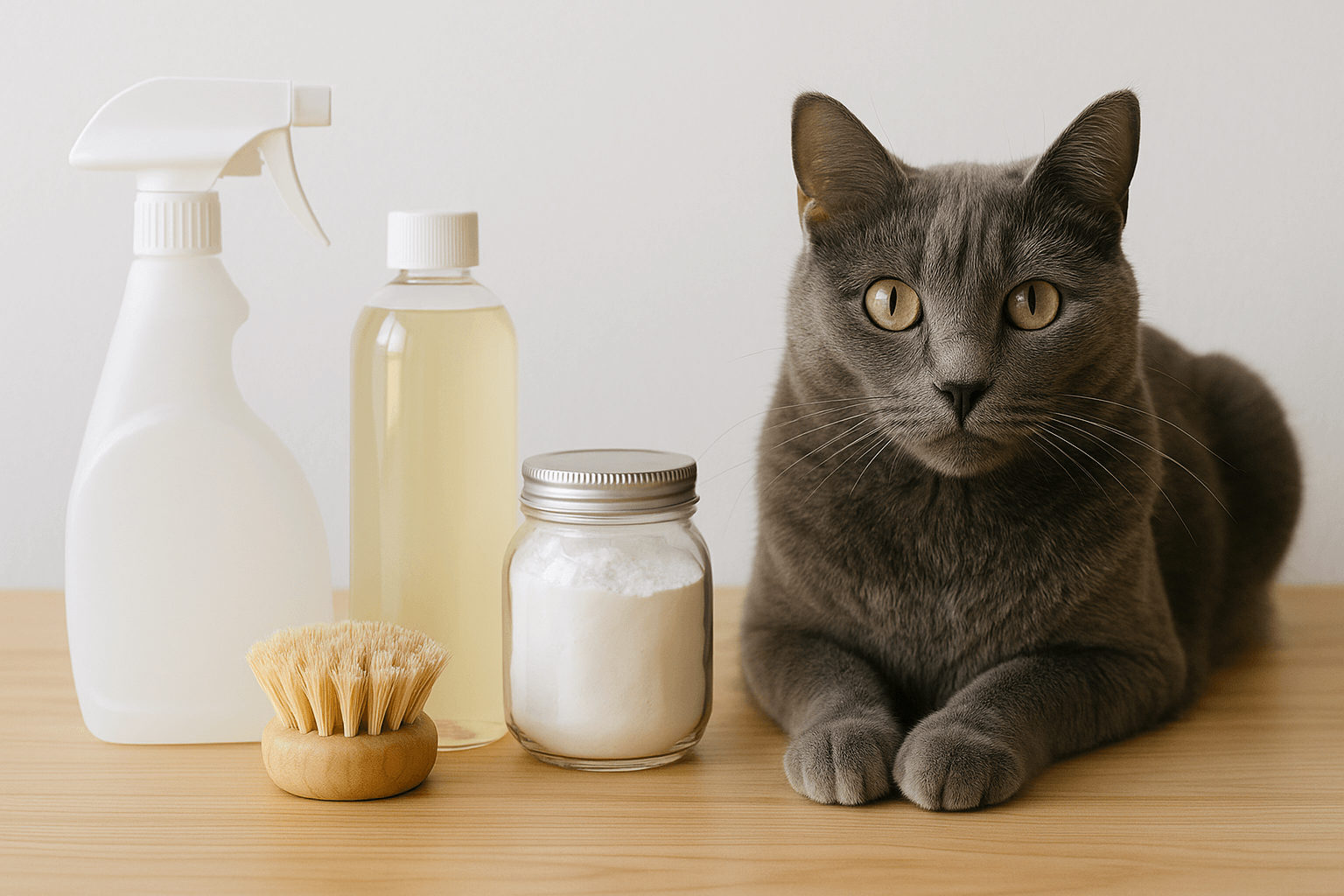Diabetic Cat Food: Supporting Your Feline’s Health
Managing diabetes in cats requires careful attention to their diet, as food plays a crucial role in regulating blood sugar levels and maintaining overall health. Diabetic cat food is specially formulated to provide balanced nutrition while minimizing spikes in glucose levels. Whether your cat has been recently diagnosed or you’re looking to optimize their existing diet, understanding the right nutritional choices is essential for their well-being. In this guide, we’ll explore everything you need to know about diabetic cat food, from key ingredients to feeding strategies, ensuring your furry friend thrives despite their condition.
Expert Insight on Obesity and Diabetes in Cats
“One of the most important factors that leads to diabetes in cats is obesity. Fat cells produce hormones that make the body less responsive to insulin. The more fat that is present, the more of these hormones that are produced.”
Key Ingredients to Look for in Diabetic Cat Food
When selecting food for a diabetic cat, it’s important to focus on ingredients that support stable blood sugar levels and promote overall health. Here are some essential components to prioritize:
High-Quality Protein:
Cats are obligate carnivores, meaning they require animal-based protein to thrive. Look for foods with real meat, poultry, or fish as the primary ingredient.Low Carbohydrates:
Foods with minimal carbohydrate content help prevent blood sugar spikes. Avoid options high in grains, potatoes, or fillers.Healthy Fats:
Omega-3 and omega-6 fatty acids support skin, coat, and immune health without negatively impacting blood sugar levels.Fiber-Rich Ingredients:
Moderate fiber content aids digestion and helps regulate glucose absorption, promoting better glycemic control.No Added Sugars:
Artificial sweeteners or sugary additives can exacerbate diabetes. Always check labels for hidden sugars like corn syrup or molasses.
Choosing diabetic-friendly food with these ingredients ensures your cat receives the nutrients they need while managing their condition effectively.
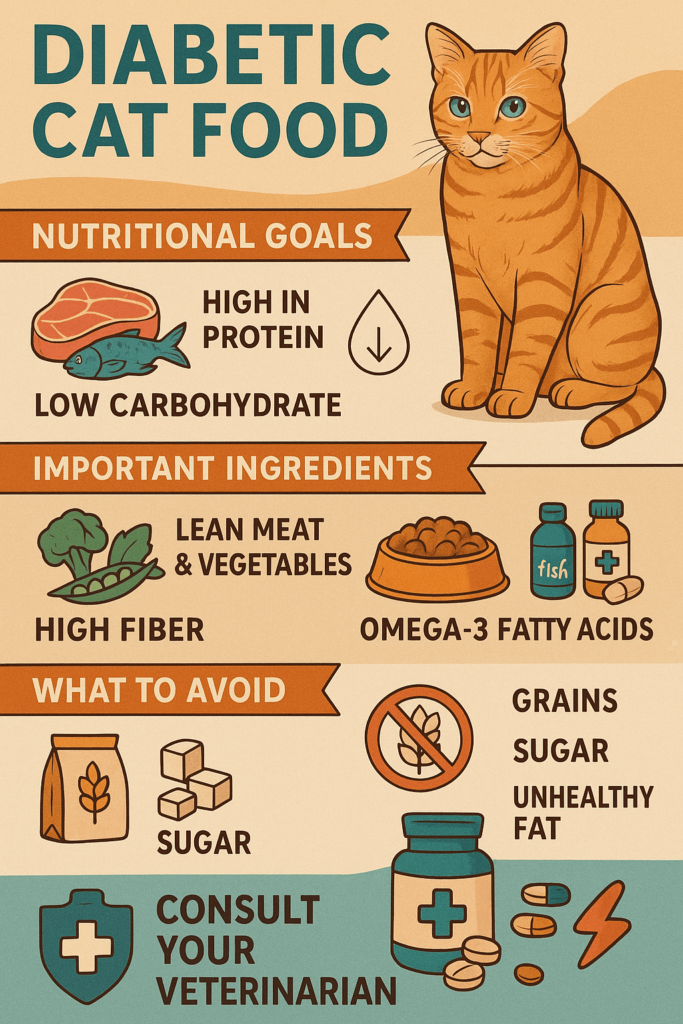
Feeding Strategies for Diabetic Cats
In addition to selecting the right food, how and when you feed your diabetic cat can significantly impact their health. These strategies can help you establish a routine that supports their dietary needs.
Consistent Meal Times:
Feeding your cat at the same times each day helps regulate insulin levels and prevents fluctuations in blood sugar.Controlled Portions:
Measure portions carefully to avoid overfeeding, which can lead to weight gain and worsen insulin resistance.Avoid Free Feeding:
Leaving food out all day can make it harder to monitor intake and manage blood sugar levels effectively. Stick to scheduled meals instead.Pair Food with Insulin Injections:
Coordinate meal times with insulin doses as recommended by your veterinarian for optimal glucose management.Monitor Water Intake:
Diabetic cats often drink more water due to increased urination. Ensure fresh water is always available to prevent dehydration.
Implementing these strategies creates a structured feeding plan that supports your cat’s health and simplifies diabetes management.
Check this guide 👉Understanding Pre-Diabetic Cats: Best 7 Expert Tips!
Check this guide 👉Understanding the Cost of Cat Diabetes Treatment: Best 7 Tips
Check this guide 👉Diabetic Cat Vomiting: Best 7 Health Tips!
Best Ingredients for Diabetic Cats | Ingredients to Avoid |
|---|---|
High-quality animal protein | Grains like corn or wheat |
Low-carb vegetables (e.g., green beans) | Artificial sweeteners or flavors |
Omega-3 fatty acids | High-glycemic fruits (e.g., grapes) |
Natural fiber sources | Fillers like soy or rice bran |
No added sugars | By-products or low-quality meats |
Signs Your Cat May Need a Diet Change
If your diabetic cat isn’t responding well to their current food, certain signs may indicate the need for a dietary adjustment. Recognizing these symptoms early can prevent complications and improve their quality of life.
Persistent High Blood Sugar Levels:
If glucose readings remain elevated despite medication, it may be time to reevaluate their diet.Weight Gain or Loss:
Unexplained changes in weight could signal an imbalance in calorie or nutrient intake.Increased Hunger or Thirst:
Excessive hunger or thirst may indicate inadequate nutrition or poor glycemic control.Lethargy or Weakness:
A lack of energy could suggest your cat isn’t receiving the nutrients they need to stay active.Digestive Issues:
Frequent vomiting or diarrhea may point to food intolerances or an imbalanced diet.
Addressing these signs promptly ensures your cat’s diet aligns with their health needs and supports effective diabetes management.
Homemade vs. Commercial Diabetic Cat Food
Deciding between homemade and commercial diabetic cat food depends on your preferences, resources, and your cat’s specific needs. Both options have pros and cons to consider.
Pros of Homemade Food:
You control the ingredients, ensuring no harmful additives or fillers are included.Cons of Homemade Food:
Preparing balanced meals requires veterinary guidance and can be time-consuming.Pros of Commercial Food:
Many brands offer vet-approved formulas specifically designed for diabetic cats.Cons of Commercial Food:
Some products may contain unnecessary fillers or lower-quality ingredients.Combination Approach:
Mixing high-quality commercial food with homemade additions can provide flexibility and balance.
Evaluating these factors helps you choose the best option for your cat’s unique dietary requirements.
Common Mistakes to Avoid When Feeding a Diabetic Cat
Even with the best intentions, mistakes in feeding can hinder your cat’s progress. Avoiding these pitfalls ensures your efforts yield positive results.
Overlooking Carbohydrate Content:
Ignoring carb levels in food can lead to blood sugar spikes, undermining diabetes management.Skipping Veterinary Guidance:
Making dietary changes without consulting your vet can result in imbalanced nutrition.Feeding Too Many Treats:
Even small snacks can add up, causing unwanted fluctuations in glucose levels.Inconsistent Feeding Times:
Irregular meal schedules disrupt insulin regulation and make management more challenging.Neglecting Hydration:
Dehydration can exacerbate diabetes symptoms, so always ensure access to fresh water.
By avoiding these mistakes, you create a stable environment that supports your cat’s health journey.
How to Transition Your Cat to Diabetic-Friendly Food
Switching your cat’s diet requires patience and care to avoid digestive upset. Follow these steps for a smooth transition.
Gradual Mixing:
Start by mixing a small amount of the new food with their current diet, gradually increasing the ratio over 7-10 days.Monitor Their Reaction:
Watch for signs of acceptance or refusal, adjusting the pace of the transition as needed.Offer Variety Within Limits:
Introduce different textures or flavors within diabetic-friendly options to keep meals interesting.Reward Positive Behavior:
Use praise or playtime to encourage your cat to try the new food willingly.Consult Your Vet if Issues Arise:
If your cat refuses to eat or shows signs of illness, seek professional advice immediately.
A thoughtful approach to transitioning ensures your cat adapts comfortably to their new diet.
Supplements That Support Diabetic Cats
While food is the foundation of diabetes management, certain supplements can enhance your cat’s health and well-being.
Omega-3 Fatty Acids:
These anti-inflammatory compounds support joint, skin, and cardiovascular health.Probiotics:
Probiotic supplements aid digestion and improve gut health, which is vital for nutrient absorption.Taurine:
This essential amino acid supports heart and eye health, especially in cats with diabetes.Chromium Picolinate:
This trace mineral may improve insulin sensitivity and glucose metabolism.Antioxidants:
Vitamins C and E help combat oxidative stress and support immune function.
Supplementing wisely under veterinary supervision can complement your cat’s diet and boost their overall vitality.
Frequently Asked Questions About Diabetic Cat Food
Can I feed my diabetic cat dry food?
Yes, but ensure it’s low in carbs and high in protein. Wet food is often preferred due to its higher moisture content.
How often should I feed my diabetic cat?
Most diabetic cats do best with two meals per day, timed around insulin injections.
What vegetables are safe for diabetic cats?
Green beans, zucchini, and spinach are low-carb options that can complement their diet.
Is wet food better than dry food for diabetic cats?
Wet food is generally recommended because it’s lower in carbs and provides hydration, which is crucial for diabetic cats.
Can treats be given to diabetic cats?
Yes, but choose low-carb, high-protein treats and offer them in moderation to avoid disrupting blood sugar levels.
Empowering Your Diabetic Cat’s Journey to Better Health
Feeding a diabetic cat doesn’t have to be overwhelming—with the right knowledge and tools, you can provide them with a diet that supports their health and happiness. By focusing on high-quality ingredients, consistent feeding routines, and regular monitoring, you can help your feline friend thrive despite their condition. Remember, every cat is unique, so consult your veterinarian to tailor a plan that suits their individual needs. With love, care, and the right nutritional foundation, your diabetic cat can enjoy a long, fulfilling life by your side.
Cat Dry Skin Treatment: Best 7 Expert Tips! Discover effective remedies and expert advice to soothe your cat’s dry skin, restore their coat’s shine, and ensure lasting comfort with simple, actionable solutions.
Understanding Cat Tooth Resorption: Best 7 Expert Tips! Discover causes, symptoms, and treatment options to protect your cat’s dental health and ensure a pain-free life.
Cerebellar Hypoplasia in Cats: Best 7 Expert Tips! Discover expert advice on caring for cats with cerebellar hypoplasia, managing symptoms, and creating a safe, loving environment for your wobbly feline friend.
Cat-Safe Cleaning Products: Best 7 Expert Tips! Discover safe, non-toxic cleaning solutions to protect your cat’s health while keeping your home spotless and fresh.

